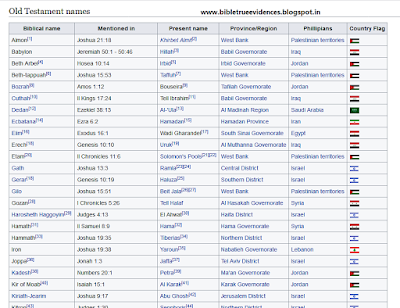The events of the Bible happened in real places, with real people. Take a virtual journey across the biblical landscape, and see the cities where Jesus and the Apostles walked, lived, and changed the world.
Logos Bible Software sent photographers all over the holy land, and they assembled 400 photos, videos, infographics, and maps of biblical places to guide your studies and help bring the Bible to life.
Parthenon columns. Columns against the sky at the Parthenon in Athens.
Restored stoa, Athens. Restored stoa (covered public walkway) in the Athens Agora.
A partially restored ancient arch in Corinth
Ruined arch, Philippi. A ruined brick and stone arch at the northwestern entrance to the fifth century AD “Basilica B” in Philippi, with Philippi’s Acropolis in the right background.
Stone doorway, Philippi. A restored stone doorway leading into the fifth-century AD “Basilica B” in Philippi.
Jail, Philippi. A possible site of the Philippian jail where Paul and Silas led the jailor to Christ (Acts 16:23–40).
Arched doorways, Thessalonica. Arched shop doorways in excavated ruins of ancient Thessalonica.
Reef Palace pillars, Caesarea. Pillars in Herod the Great’s “Reef” or “Promontory Palace” complex, probably the site of Paul’s hearing and trial (Acts 25:1–26:32).
Floor, Caesarea theater. A view of the floor of the Roman theater in Caesarea from high in the seating section.
Herod’s Aqueduct, Caesarea. An aqueduct built by Herod the Great to carry water from springs below Mount Carmel to Caesarea, 10 miles (16 km) away.
Capernaum synagogue, limestone wall. A fourth-century AD synagogue in Capernaum, built from limestone hauled from many miles away.
Roman hippodrome, Caesarea. Ruins of the Roman hippodrome (horse or chariot race track) at Caesarea.
Jezreel Valley from Mount Precipice.
Nazareth sunset
Fountain at Tabgha. A fountain at Tabgha, the traditional site of the loaves and fish miracle (Mark 6:30–44) and Jesus’ fourth post-resurrection appearance (John 21:1–23).
Central Dead Sea looking East
Roman ruins, Scythopolis (Beth Shan). Partly restored Roman era ruins at Scythopolis (Beth Shan).
Arches, Pool of Bethesda. A view of the arches over the Pool of Bethesda, Jerusalem, where Jesus healed the paralyzed man (John 5:2–9).
Simon the Tanner’s house. The traditional site of Simon the Tanner’s house (Acts 10:1-23) in Jaffa (biblical Joppa).
Stone tomb closure. A close-up of the stone tomb closure at the Garden Tomb in Jerusalem. Possibly the site of Jesus’ burial and resurrection (John 19:41-42).
Arch series, Smyrna. A series of restored Roman era stone arches in the agora, or public marketplace, at Smyrna (modern Izmir, Turkey).
Marble columns and gymnasium façade, Sardis. A view of marble columns and the façade, part of an ancient gymnasium in Sardis. A gymnasium was roughly equivalent to a high school, but with a strong emphasis on preparation for public athletic games (hence the modern use of the word “gymnasium”).
Mosaic floor, Sardis synagogue.
Curetes Street, Ephesus. Curetes Street, a rare diagonal street (Graeco-Roman cities were usually laid out in a north-south grid) located in Ephesus and named for an inscription found there that mentioned the Curetes, priests of Artemis.
Latin inscription, Ephesus
Ornate column capital, Laodicea




























Comments
Post a Comment